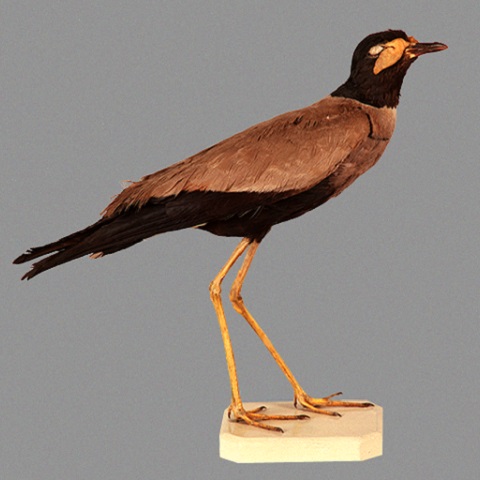Conservation Actions
Conservation and Research Actions UnderwayThe species may still persist in some or all of the four protected areas in which it has been seen since 2001, including three national parks. However, despite their designations, at least two of these national parks (Halimun-Salak NP and Mts Gede-Pangrango NP) suffer encroachment along their borders, resulting in habitat loss and degradation and trapping pressure, whilst Mt Merapi National Park has lost habitat to volcanic eruptions (van Balen et al. 2013). Eight surviving birds found in trade in 2011 were acquired and taken to the Cikananga Wildlife Centre, where breeding has been achieved regularly since the first success in 2013 (Richter 2013). With additional supplementation from further confiscations, the total captive population was 32 individuals in January 2016, divided between five organisations (Eaton et al. 2015). A breeding programme may be established; although experience of successful captive breeding of Cissa species is limited (Collar et al. 2012), the first chick ever bred in captivity hatched in March 2013.
Conservation and Research Actions Proposed
Conduct range-wide surveys in order to generate an improved population estimate. Closely monitor rates of habitat loss and degradation within the species's range. Protect the species by law, but manage awareness to avoid encouraging trapping (van Balen et al. 2013). Protect any remaining substantial fragments of suitable habitat not already covered by a designation. Increase and improve enforcement measures in protected areas within the species's range (see van Balen et al. 2013). Intensify awareness-raising activities within and around protected areas to reduce trapping pressure and encroachment, and amongst the wider public to discourage trade in the species (see van Balen et al. 2013). List the species in international trade management agreements.
Location Information
Cissa thalassina is endemic to western Java, Indonesia, where there are few recent records and the species now appears to be very rare and localised (van Balen et al. 2013). Since 2001, the species has been recorded in only four protected areas: the National Parks of Mt Merapi, Mts Halimun-Salak and Mts Gede-Pangrango/Megamendung, and the South Parahyangan Protection Forest/Nature Reserve. In the 1990s, it was also recorded at Pembarisan Mts Protection Forest and Dieng Mts Protection Forest, with records earlier in the 20th century from Jampang Kulon (not protected), Mt Slamat Protection Forest and North Parahyangan Protection Forest/Nature Reserve (van Balen et al. 2013). Week-long ornithological surveys across 27 sites on nine mountains in West-Central Java between 2018 and 2020 also failed to find the species (C. Devenish, A.R. Junaid and S. Marsden in litt. 2020). The paucity of recent records thus implies that there are probably fewer than 250 mature individuals remaining, with the population is suspected to be in on-going decline.Geographic Range
Extant
Indonesia
Population Information
The species appears to have an extremely small population, which is likely to number fewer than 250 mature individuals, with each subpopulation probably containing 50 mature individuals or fewer (van Balen et al. 2011). It has also been suggested that the total population probably does not exceed 100 individuals, but could number fewer than 50 individuals, as there may be only one or two dozen birds at each site where the species may still be extant (van Balen et al. 2013); however, surveys should be conducted to confirm whether this is the case.Threats
Trapping for the songbird trade is the primary reason for the rapid declines observed in the species (van Balen et al. 2013, Eaton et al. 2015). Bird-catchers tend to specialise in particular species, suggesting that remnant populations are at increased risk of local extirpation through targeted trapping pressure (van Balen et al. 2013). This is supported by the sporadic, unpredictable appearance of occasional wild-caught individuals for sale in urban markets or roadside cages (Eaton et al. 2015).Habitat loss likely caused a considerable decline over the course of the previous century and its results have enabled trappers to access the majority of the population. On Java, most forest below 1,000 m, and in some areas up to 1,500 m, has been cleared, which is suspected to have caused serious declines in this species’s population (van Balen et al. 2013). And whilst deforestation across Western Java has marginalized in recent years, with the bulk of forest loss occurring prior to 2000, forest coverage remains low at 5,234 km2 in area (Higginbottom et al. 2019). Habitat and loss and degradation is driven primarily by agricultural expansion, logging and mining.
Partners
IUCN Red List Account Link
Please click here to see the species' IUCN Red List Account page.Photo Credits
Cikananga Conservation Breeding Centre (category and featured image)






